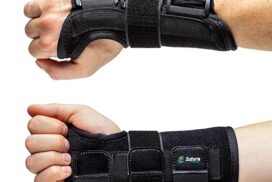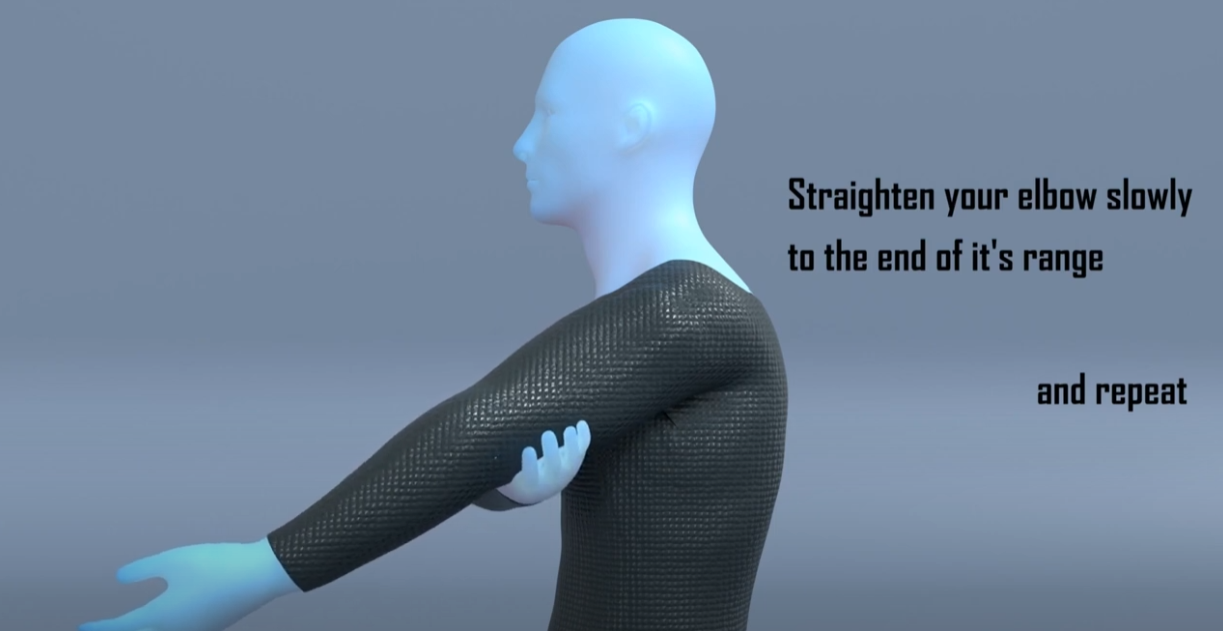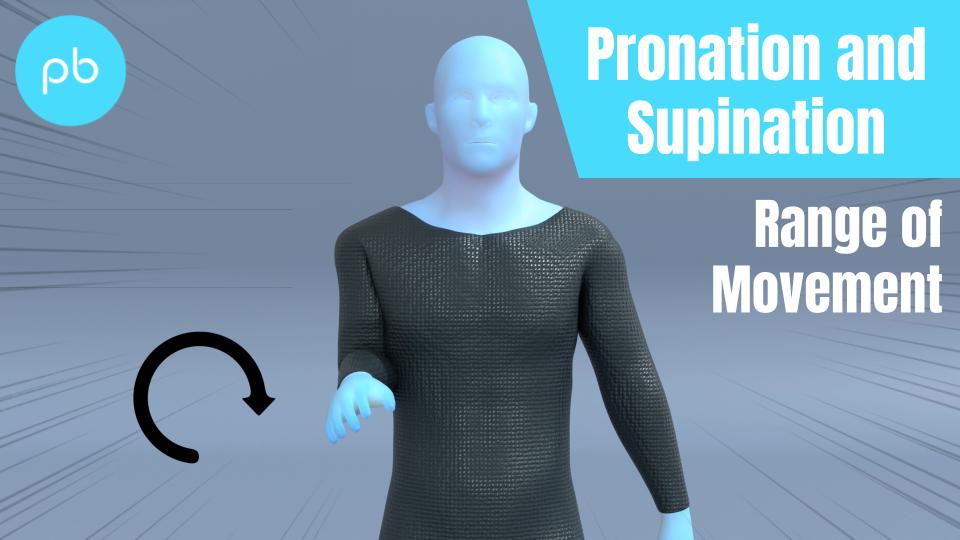
Full Report
Welcome to your free report covering the diagnosis, management and treatment options, exercises and equipment that could help in rehabilitation. Scroll down to read more or use the sidebar icons to skip ahead.
Diagnosis
Possibly Kienböck's Disease
In your wrist you have a small bone called the lunate. In Kienböck's disease this bone has a loss of blood supply which causes the bone to progressively collapse. Kienböck's disease is a serious condition that can significantly impact wrist function and quality of life, but with appropriate management, symptoms can be controlled and further deterioration can be prevented.With Keinböck's disease you normally have wrist pain which may worsen with activity, along with swelling and tenderness over the lunate bone region of the wrist, decreased wrist strength, reduced range of motion in the wrist and general stiffness in the wrist.
The exact cause of this disease is not always clear, but it may involve trauma, repetitive stress, or variations within the wrist of the structures which then affect blood flow to the bone. Conditions such as lupus or sickle cell disease that impact blood flow can also contribute to this as well.
There are 4 stages of the disease. Initially you may have mild symptoms with no obvious changes in X-rays, in stage 2 there would be a hardening of the lunate visible in X-rays, in stage 3 the lunate is fragmenting and collapsing, and then finally in stage 4 the bone has collapsed further with secondary arthritis visible.
To determine if you have Keinböck's disease you should book an appointment with a hand therapist or your family doctor. They will be able to perform a full physical examination and then possible refer for imaging tests like X-rays, MRI, or CT scans to assess the condition of the lunate bone.
If the imaging shows Keinböck's disease there are a number of non-surgical treatment options available, such as splinting or casting to immobilise the wrist, medication for pain management, and activity modification. If however these are not effective, or perhaps the Keinböck's disease has progressed through to the later stages it may be more suitable to perform surgery to help restore the blood flow. The medical professionals who referred you for imaging will be able to advise on the best steps here.
The outcome of this condition varies depending on the stage at diagnosis and the effectiveness of the treatment which can vary from person to person. However early detection and intervention can improve outcomes and prevent progression to later stages.
Management
Click each phase heading to see the progression of your management programme.
The first step is to look at getting reviewed by a hand therapist or your family doctor to assess if the wrist pain you are currently experiencing is Kienböck's disease. They will ask you specific questions relating to your past medical history and current symptoms, along with a thorough physical assessment to evaluate if this is Kienböck's disease. From this assessment they may decide to send you for further investigations such as an x-ray or CT scan.
Whilst you are either waiting for this appointment and potentially any subsequent imaging, you can focus on treatment methods which will hopefully alleviate your wrist symptoms.

RICE
RICE stands for Rest, Ice, Compression and Elevation. These steps are helpful for when you have an injury in the acute phase to help reduce pain and also with the healing process.
Rest: You need to reduce the activity level you are performing and let your body have time to heal. The aim here is to pace your activities throughout the day and cut back on anything unnecessary or that particular increases your symptoms.
Ice: This can help reduce the pain you are experiencing and also reduce some of the swelling. Using some frozen peas wrapped in a damp cloth for 20 minutes will work well here and do this every hour or two. Do not apply the ice directly to your skin, make sure you have a barrier which is preferably damp, and keep an eye out for any ice burns on the skin. If you notice this stop immediately.
What can be helpful here is having a specifically designed ice pack you can reuse over and over again. You still need to have that damp cloth as a barrier with these packs as well.
Compression: This relates to the use of the ice being compressed onto the wrist. This can be achieved by simply wrapping a cloth around your joint, but more bespoke equipment offers this which would be more comfortable and effective, such as a wrist ice pack.
Elevation: Having your elbow rested on an object, with your wrist raised above your shoulder will help reduce any swelling in the area. This may help reduce some of the painful symptoms you are experiencing. Aim here for a similar time frame as applying ice and go for up to 20 minutes. If you are not experiencing any swelling then you can skip this part of the treatment. Do not compress and elevate at the same time, as the volume of fluid returning towards your heart may put too much pressure on it.
Medication
In the initial phase the use of over the counter medication may be an option. Medication such as paracetamol and ibuprofen may allow this acute phase to be more manageable. Please consult your family doctor if you have any concerns with this impacting your current medication, or if any medical history may be impacted by the option of including this medication.

Brace
You may find it helpful to have the support of a basic wrist brace. It may help offer some support whilst you are doing daily activities and reduce your symptoms.

Exercises
In this initial phase your level of activity you can tolerate may vary from day-to-day, and the aim here is to maintain general mobility of the wrist along with the entire arm.
Don’t forget to keep your elbow and shoulders mobile during this time as well. The tendency is to stiffen up and not move as much in general due to the discomfort. Keeping the joints above and below the elbow loose will help.
| Exercise | Frequency | |
| Shoulder Flexibility Exercises | 30 seconds x 2 sets | 5 x daily |
| Elbow Pronation and Supination Active Range of Movement | 30 seconds x 2 sets | 5 x daily |
| Elbow Flexion and Extension Active Range of Movement | 30 seconds x 2 sets | 5 x daily |
You may find it helpful to do these exercises in a circuit type fashion, where you do exercise 1 for 1 set, followed by exercise 2 for 1 set, then exercise 3 for 1 set, follow this pattern until all the movements are completed, and then restarting.
You will largely be dictated on progression here by the management set out from the family doctor or hand therapist so we won’t give any timeframe on expectations for how long this phase should last. You may find you want to continue the treatment methods from Phase 1 if they offer relief, and you can continue the exercises also.

Education
The aim of phase 2 is to introduce some basic and general strength exercises for the wrist. Regardless of the cause of pain, if you don’t use a body part it can get stiffer and weaker over time. By introducing activities back to the affected joint in a controlled and progressive manner will hopefully result in a pain-free return to daily life.

Exercises
You can continue any exercises from the previous phase and you may find that certain days you need an easier selection of exercises as the symptoms may be higher.
You want to make sure you maintain the range of motion you have not limited due to pain, and remember not to overdo things which cause any increase in pain. The aim of these exercises is to introduce some basic strength work. Remember to start off easy and only increase the intensity each week once the symptoms have settled.
| Exercise | Frequency | |
| Wrist Active Range of Movement | 30 seconds x 2 sets | 5 x daily |
| Grip Strength | 30 - 60 seconds x 2 sets | 5 x daily |
| Elbow Pronation and Supination Active Range of Movement | 30 seconds x 2 sets | 5 x daily |
- For the first exercise perform 30 seconds with each direction of movement. Start off gently to understand what mobility you can tolerate, and slowly increase it over the subsequent weeks. You would expect the wrist extension movement to be irritable, so be cautious how much movement you perform here until you realise your limits.
- For the grip strength exercise start off with the lightest putty or stress ball on the grip strength exercise. You may find that towards the end of the Phase you can introduce a Gyroball as a way to challenge you further, along with offering a more entertaining way to strengthen your forearm.
- The third exercise is continued from Phase 1 as this movement is often neglected when people are working on their wrist range of movement.
- You may find it helpful to do these exercises in a circuit type fashion, where you do exercise 1 for 1 set, followed by exercise 2 for 1 set, then exercise 3 for 1 set, and then restarting.

Symptoms
If there is an underlying inflammatory condition it may be the case that the management of that dictates what symptoms you experience as you introduce the exercises from this phase. Because you may have that extra element to consider, it is really important to slowly progress through this phase in terms of the intensity of the exercises.
If you are able to manage your wrist pain well and there was no increase with the exercises from Phase 2, you may try some of the exercises in Phase 3. In this phase we aim to increase the level of difficulty in the exercises which will further improve your ability to perform activities of daily living. What works for one person may not work for another, so feel free to pick and choose which exercises you can complete without increasing your symptoms.

Education
Similar to Phase 2 there will be no timelines here.
You should at this stage be able to perform the exercises from Phase 2 with ease on a regular basis, and not reliant on any pain medication to perform tasks.
Again similar to the previous phase you can go back to phase 2 at any point if the symptoms are too irritable, and you may find you want to perform those exercises on your days off during this phase.

Exercises
| Exercise | Frequency | |
| Wrist Extension Strength | 8-10 reps x 3 sets | 3 x daily |
| Wrist Flexor Strength | 8-10 reps x 3 sets | 3 x daily |
| Pronation and Supination Strength | 60 seconds x 3 sets | 3 x daily |
Some points to consider with the exercises:
- For the wrist flexion and extension strength exercises you can use resistance bands, dumbbells, or simply a bottle or water. Reducing the range with this exercise may make it more manageable.
- For the Prayer Stretch exercises start this slowly and increase the range of motion over time, you would expect this exercise to be discomforting to start with initially as you haven’t moved your wrist this far for a number of weeks.
- You may find it helpful to do these exercises in a circuit type fashion, where you do exercise 1 for 1 set, followed by exercise 2 for 1 set, then exercise 3 for 1 set, followed by exercise 4 for 1 set, and then restarting.

Pacing
At this stage you may find you can do more day-to-day activities pain free. The temptation here is to go a bit overboard. A nice reminder to pace activities so that you don’t over do it, and that you spread these activities out as much as possible throughout the day.
Return to Sport or Activity
If your aim is to return to sport it would be advisable to seek the advice of any specialist who may be overseeing your care.
As a general rule, try and aim for two pain-free sessions at a reduced duration or intensity before increasing.
For example, if you normally play 60 minutes of tennis, aim to play for 30 minutes in a non-competitive environment for two non-consecutive days.
Having a day's rest between sessions allows you to have appropriate rest and for your body to repair and become stronger.
Once you have found a duration or intensity you can tolerate with no flare up, aim to increase the next session by 10%. This can seem like a slow and conservative process however the research has shown this is the optimum level of increase to avoid an overuse injury. Increasing duration or intensity by more than 10% significantly increases your chance of injury. As you will have been away from your sport for a number of months, you will have lost some of your fitness conditioning in this time and will need to build this up slowly.
Over time you will be able to slowly return to your pre-injury level of activity without regressing back to any acute flare-up.
















